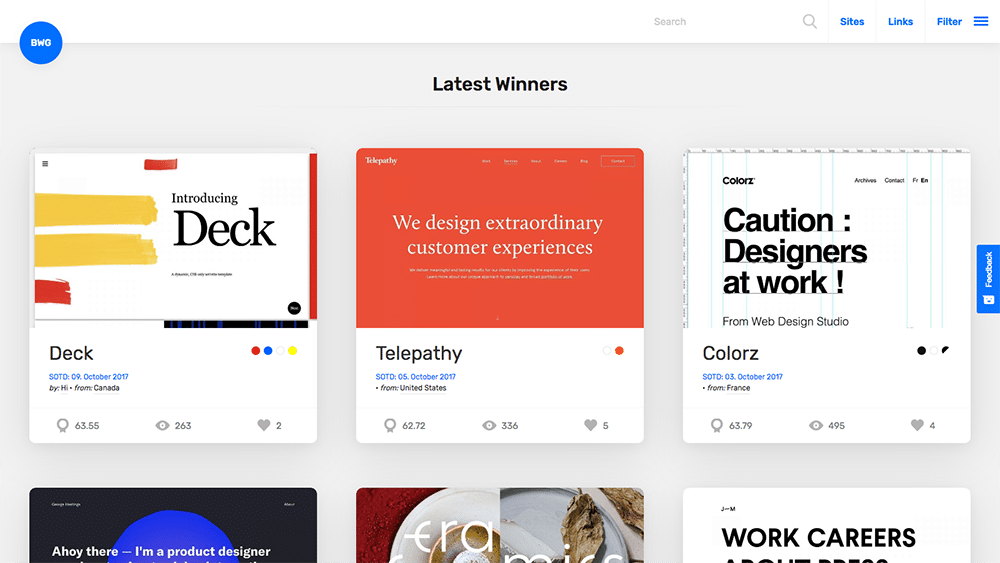Top Trends in Site Style: What You Required to Know
As the landscape of website design proceeds to evolve, recognizing the newest patterns is necessary for developing efficient and interesting online experiences. Minimalism, dark mode, and mobile-first techniques are amongst the crucial themes shaping modern layout, each offering distinct benefits in individual interaction and functionality. In addition, the focus on ease of access and inclusivity emphasizes the significance of developing electronic environments that provide to all individuals. Nonetheless, the effects of these trends surpass aesthetic appeals; they represent a change in exactly how we perceive customer interaction. What various other elements are affecting these style selections today?
Minimalist Layout Visual Appeals
In recent times, minimalist style aesthetics have actually arised as a dominant pattern in website layout, emphasizing simpleness and capability. This method focuses on necessary content and eliminates unnecessary components, therefore improving customer experience. By concentrating on clean lines, sufficient white room, and a limited color combination, minimalist styles assist in much easier navigating and quicker tons times, which are critical in maintaining customers' interest.
Typography plays a substantial function in minimal layout, as the choice of typeface can evoke details feelings and lead the individual's trip with the web content. The calculated usage of visuals, such as premium pictures or refined computer animations, can enhance user involvement without frustrating the total visual.
As digital areas remain to develop, the minimal design concept continues to be pertinent, accommodating a varied target market. Organizations adopting this trend are typically viewed as modern-day and user-centric, which can considerably affect brand name assumption in an increasingly open market. Eventually, minimalist layout looks use an effective remedy for reliable and attractive website experiences.
Dark Mode Popularity
Accepting a growing fad amongst individuals, dark mode has actually gotten considerable appeal in website layout and application interfaces. This layout method features a predominantly dark shade combination, which not just enhances visual charm but likewise reduces eye stress, especially in low-light settings. Individuals increasingly value the convenience that dark setting gives, resulting in much longer engagement times and a more delightful browsing experience.
The fostering of dark setting is also driven by its perceived benefits for battery life on OLED screens, where dark pixels take in less power. This practical benefit, combined with the elegant, modern appearance that dark motifs provide, has led many developers to integrate dark setting alternatives into their jobs.
Moreover, dark setting can develop a sense of depth and emphasis, drawing interest to crucial elements of a site or application. web design company singapore. As a result, brands leveraging dark mode can boost individual interaction and produce a distinct identity in a crowded industry. With the fad proceeding to climb, including dark setting right into website design is coming to be not simply a preference yet a conventional assumption among users, making it important for designers and designers alike to consider this element in their projects
Interactive and Immersive Elements
Frequently, designers are including interactive and immersive elements into web sites to improve customer interaction and create remarkable experiences. This trend reacts to the raising expectation from users for even more vibrant and personalized interactions. By leveraging features such as computer animations, videos, and 3D graphics, websites can attract users in, fostering a much deeper link with the content.
Interactive components, such as tests, polls, and gamified experiences, encourage site visitors to proactively take part instead of passively consume info. This involvement not only maintains users on the website longer yet additionally enhances the possibility of conversions. Furthermore, immersive technologies like online reality (VIRTUAL REALITY) and enhanced fact (AR) supply unique possibilities for companies to display product or services in a much next page more engaging manner.
The incorporation of micro-interactions-- tiny, refined animations that react to customer actions-- additionally plays an important duty in enhancing usability. These interactions provide feedback, boost navigating, and produce a sense of complete satisfaction upon completion of tasks. As the digital landscape Full Article proceeds to develop, using interactive and immersive aspects will continue to be a substantial emphasis for developers aiming to create appealing and reliable online experiences.
Mobile-First Approach
As the frequency of smart phones remains to surge, adopting a mobile-first strategy has become necessary for internet developers intending to optimize customer experience. This technique emphasizes developing for mobile tools prior to scaling approximately larger screens, guaranteeing that the core functionality and content are available on one of the most typically made use of platform.
Among the primary advantages of a mobile-first approach is enhanced efficiency. By focusing on mobile design, websites are streamlined, minimizing load times and improving navigating. This is particularly critical as individuals anticipate quick and responsive experiences on their mobile phones and tablet computers.

Ease Of Access and Inclusivity
In today's digital landscape, guaranteeing that internet sites come and comprehensive is not simply a finest method yet a basic need for getting to a diverse target market. As the net remains to work as a key ways of communication and commerce, it is vital to recognize the varied demands of customers, consisting of those with specials needs.
To accomplish real accessibility, internet designers have to comply with developed standards, such as the Internet Content Accessibility Standards (WCAG) These guidelines stress the this contact form value of offering text options for non-text content, making sure key-board navigability, and keeping a logical content structure. Inclusive design practices expand past compliance; they entail creating a user experience that accommodates numerous capabilities and choices.
Including features such as adjustable message dimensions, color comparison choices, and display viewers compatibility not only improves use for people with specials needs yet also improves the experience for all customers. Ultimately, focusing on access and inclusivity fosters a much more fair digital setting, urging wider involvement and interaction. As organizations increasingly identify the moral and economic imperatives of inclusivity, integrating these concepts into website style will certainly become an essential aspect of successful online strategies.
Final Thought
